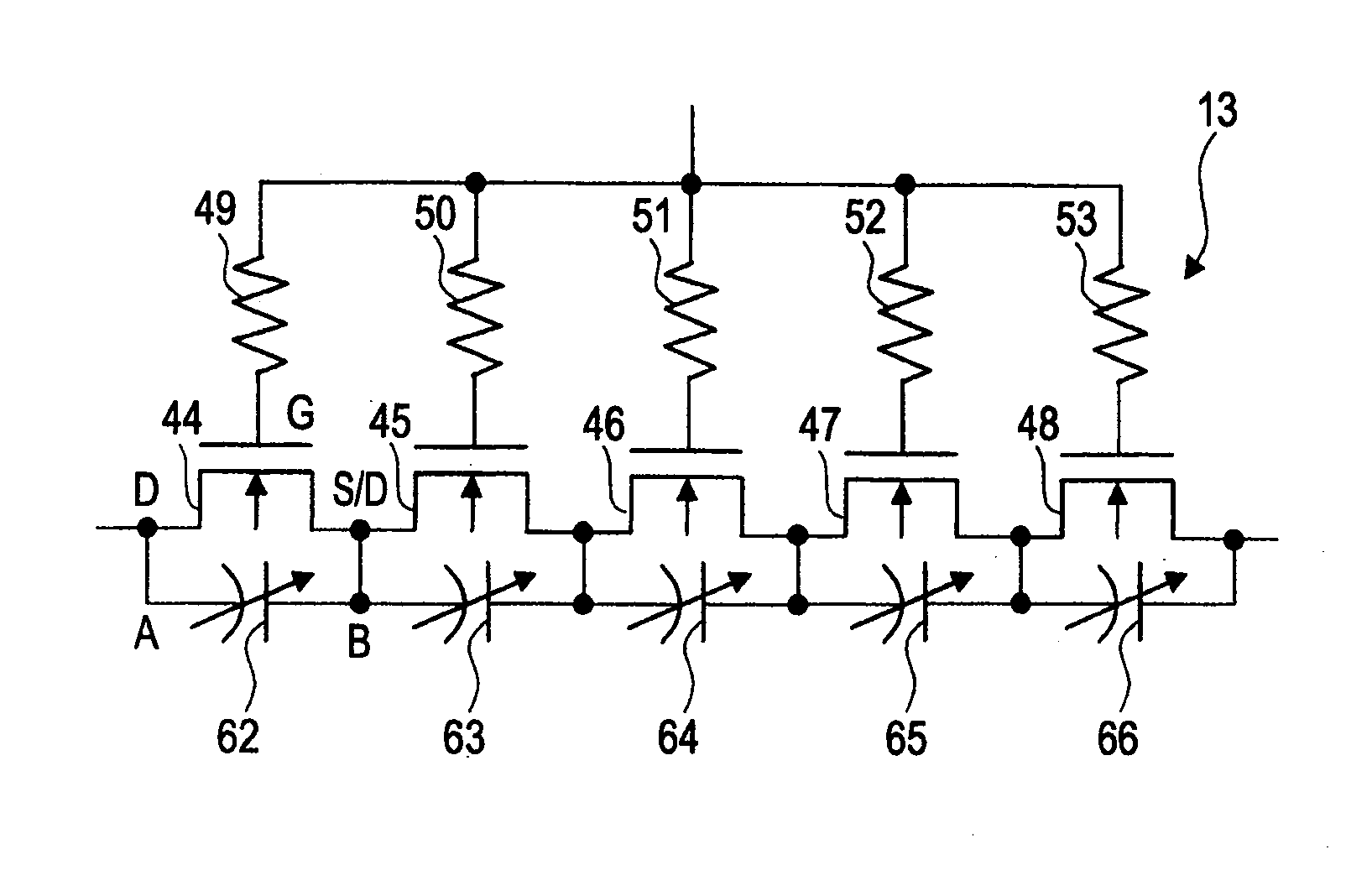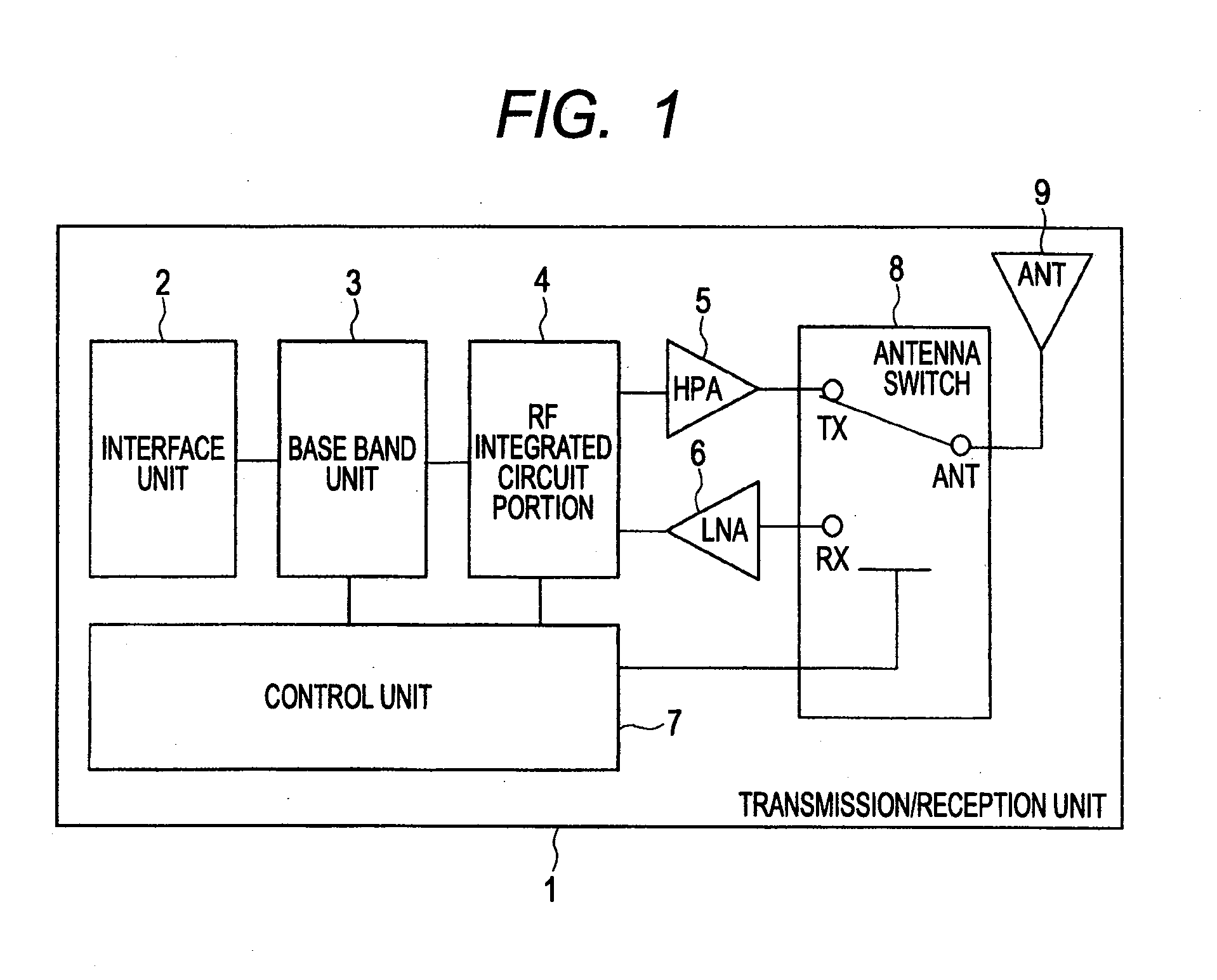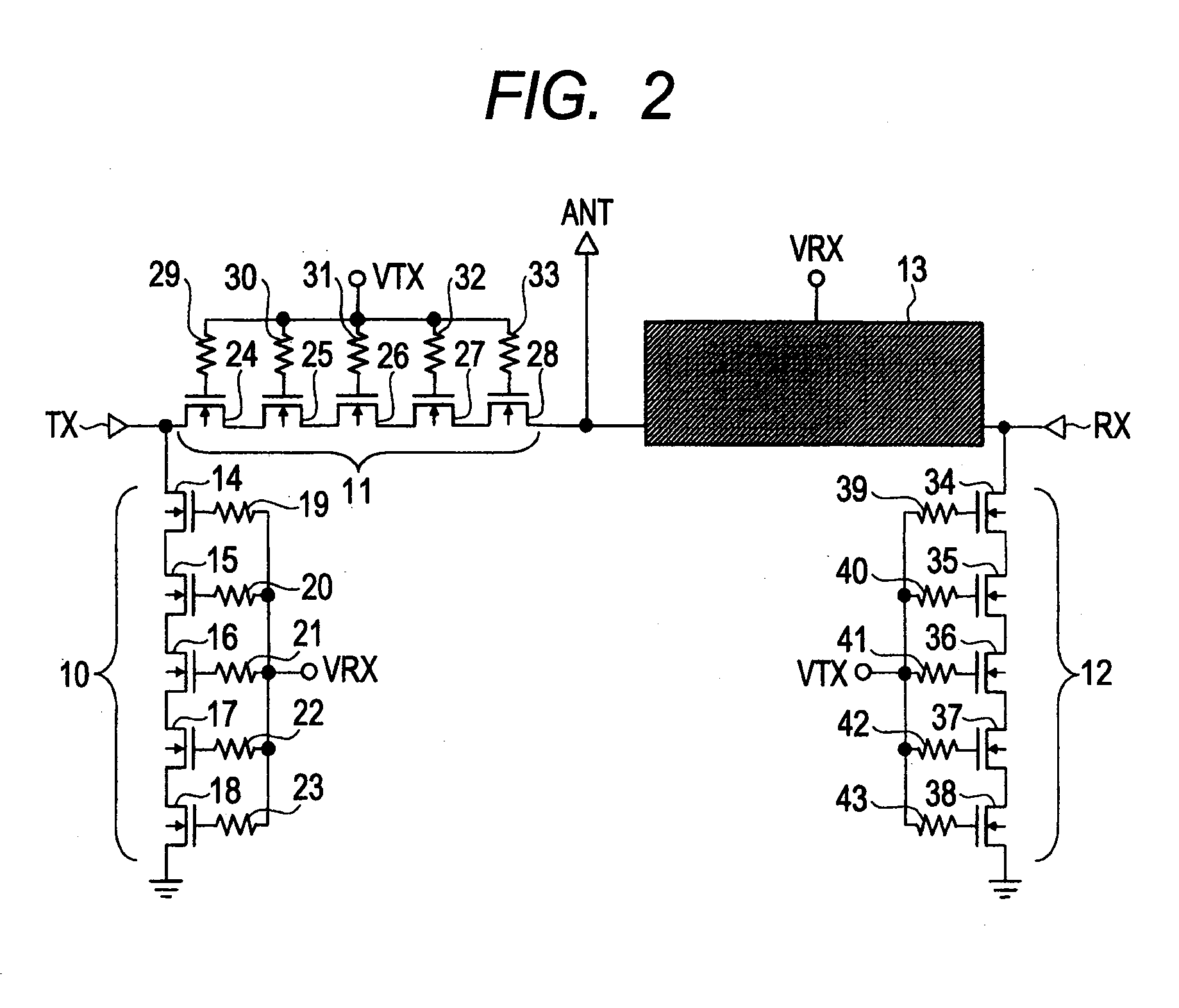Semiconductor integrated circuit device
a technology of integrated circuits and semiconductors, applied in electronic switching, capacitors, pulse techniques, etc., can solve the problem of increasing harmonic distortion, and achieve the effect of reducing the manufacturing cost of antenna switches, enhancing the performance of antenna switches, and reducing second-order harmonic distortion
- Summary
- Abstract
- Description
- Claims
- Application Information
AI Technical Summary
Benefits of technology
Problems solved by technology
Method used
Image
Examples
first embodiment
[0079]FIG. 1 is a block diagram illustrating an example of the configuration of a transmission / reception unit provided in a cellular phone in the first embodiment of the invention; FIG. 2 is a circuit diagram illustrating an example of an antenna switch provided in the transmission / reception unit in FIG. 1; FIG. 3 is a circuit diagram illustrating an example of a through MOSFET group of reception branch comprising the antenna switch in FIG. 2; FIG. 4 is a schematic diagram illustrating an example of the layout in the through MOSFET group of reception branch in FIG. 3; FIG. 5 is an explanatory drawing illustrating the voltage dependence of the substrate capacitance of SOI MOSFET; and FIG. 6 is an explanatory drawing illustrating the voltage dependence of the source-drain parasitic capacitance of SOI MOSFET.
[0080]In the first embodiment, the transmission / reception unit 1 used in, for example, a cellular phone is provided with the following members as illustrated in FIG. 1: an interfac...
second embodiment
[0125]FIG. 7 is a circuit diagram illustrating an example of a through MOSFET group of reception branch in the second embodiment of the invention; FIG. 8 is an explanatory drawing illustrating an example of the layout in a capacitance element for reducing second-order harmonic distortion provided in the through MOSFET group of reception branch in FIG. 7; FIG. 9 is an explanatory drawing illustrating the voltage dependence of the capacitance value of the capacitance element in FIG. 8; FIG. 10 is an explanatory drawing illustrating an example of a section taken along line a-b of FIG. 8; FIG. 11 is a symbol diagram representing the capacitance element in FIG. 8; and FIG. 12 is an explanatory drawing illustrating an example of the plane layout of the through MOSFET group of reception branch in FIG. 7.
[0126]With respect to the second embodiment, description will be given to a technology for adding the following capacitance element to between the source and drain of a transistor of the an...
third embodiment
[0153]FIG. 13 is a circuit diagram illustrating an example of a through MOSFET group of reception branch in the third embodiment of the invention; and FIG. 14 is an explanatory drawing illustrating an example of the layout in a capacitance element for reducing second-order harmonic distortion provided in the through MOSFET group of reception branch in FIG. 13.
[0154]In the third embodiment, capacitance elements differing in voltage dependence depending on the polarity of voltage are inserted. The capacitance elements are inserted into between the respective sources and ground or between the respective drains and ground of the transistors 44 to 48 in the through MOSFET group of reception branch 13. The voltage dependence of each of these capacitance elements is set so as to compensate the influence of the voltage dependence of substrate capacitance asymmetric with respect to the polarity of voltage on the circuit characteristics.
[0155]The antenna switch 8 is comprised as in FIG. 2 in ...
PUM
 Login to View More
Login to View More Abstract
Description
Claims
Application Information
 Login to View More
Login to View More - R&D
- Intellectual Property
- Life Sciences
- Materials
- Tech Scout
- Unparalleled Data Quality
- Higher Quality Content
- 60% Fewer Hallucinations
Browse by: Latest US Patents, China's latest patents, Technical Efficacy Thesaurus, Application Domain, Technology Topic, Popular Technical Reports.
© 2025 PatSnap. All rights reserved.Legal|Privacy policy|Modern Slavery Act Transparency Statement|Sitemap|About US| Contact US: help@patsnap.com



